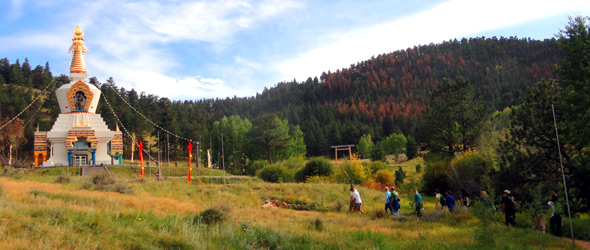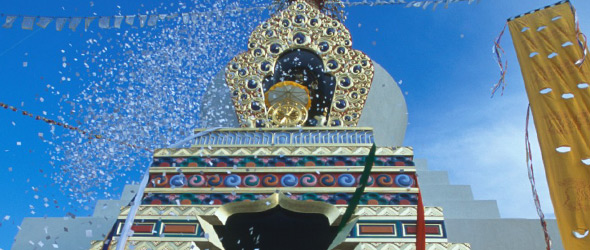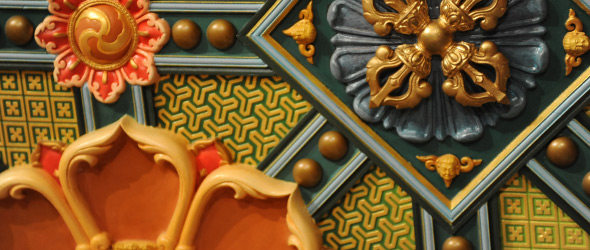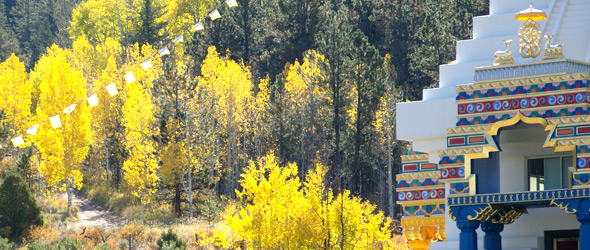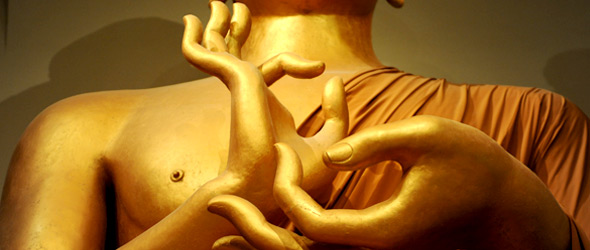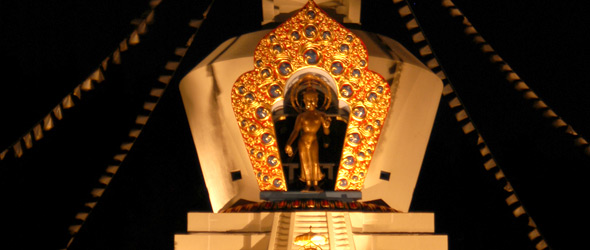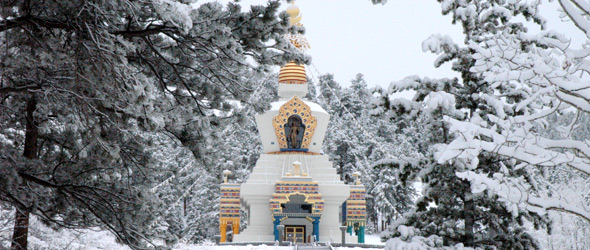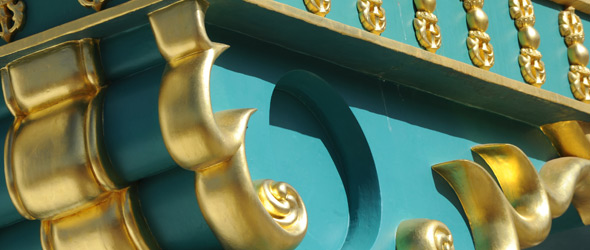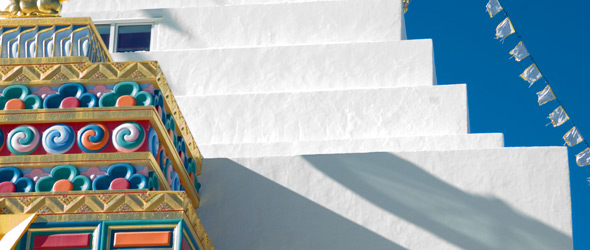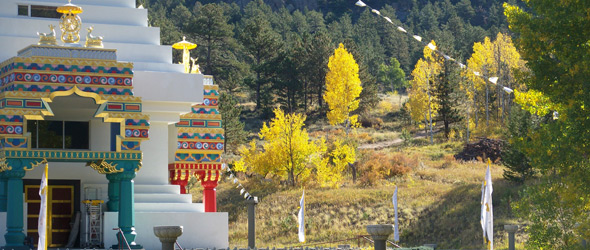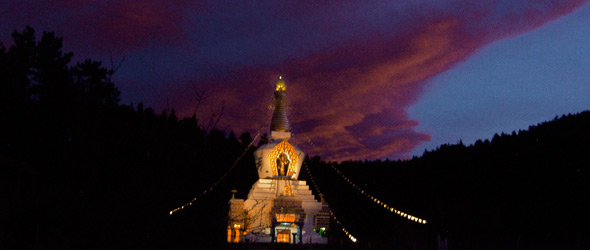The Great Stupa of Dharmakaya
Which Liberates Upon Seeing
SMC is closely monitoring the COVID-19 pandemic, and The Great Stupa is closed to visitors during this time.
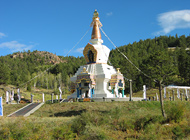 Rising among wooded hillsides, The Great Stupa of Dharmakaya crowns a meadow at the upper end of Shambhala Mountain Center’s main valley. Standing 108 feet tall, it is one of the most significant examples of sacred Buddhist architecture in North America. Built in honor of the Center’s founder, Chögyam Trungpa Rinpoche, the Great Stupa of Dharmakaya serves as an inspiration for peace and compassion throughout the world.
Rising among wooded hillsides, The Great Stupa of Dharmakaya crowns a meadow at the upper end of Shambhala Mountain Center’s main valley. Standing 108 feet tall, it is one of the most significant examples of sacred Buddhist architecture in North America. Built in honor of the Center’s founder, Chögyam Trungpa Rinpoche, the Great Stupa of Dharmakaya serves as an inspiration for peace and compassion throughout the world.
The Great Stupa is sited between two powerful landforms: the promontory known as Marpa Point and the steep cliffs opposite it. The power of the stupa balances and brings together the energies of the surrounding environment; at the same time, it embodies the wisdom and blessings of Trungpa Rinpoche, as well as the Buddhist and Shambhala lineages.
Stupas are said to promote harmony, prosperity, longevity, good health and peace. They bring blessings to the environment in which they are built, to those who build them, and to those who visit and venerate them. In this way, stupas ensure that the living quality of the Buddhist teachings will always be available.
Construction of the Great Stupa was initiated in 1988 and continues to this day. The primary construction phase occurred over a 13-year period, employing the generosity of several hundred volunteer laborers and craftspeople, with money donated through annual fundraising events. Additional contributions of expertise came from many different sectors of the technical industry.
The Great Stupa of Dharmakaya was consecrated during a ceremony lasting several days in August 2001. Since then, the Stupa has become the heart of Shambhala Mountain Center.
Maintenance and upkeep of the Great Stupa – its architectural elements, original statues, relics and paintings – is ongoing and supported through generous financial donations. The Stupa is open daily from 9:00 a.m. to 7:00 p.m. for public visitation
It has long been the tradition that wherever the teachings of the Buddhas have been revered and practiced, communities of followers have built reliquary monuments known in Sanskrit as stupas and as chörtens in Tibetan. And wherever they have been built, they have been regarded as sacred, for like religious images and scriptures, they represent aspects of enlightenment.
—His Holiness the Fourteenth Dalai Lama

